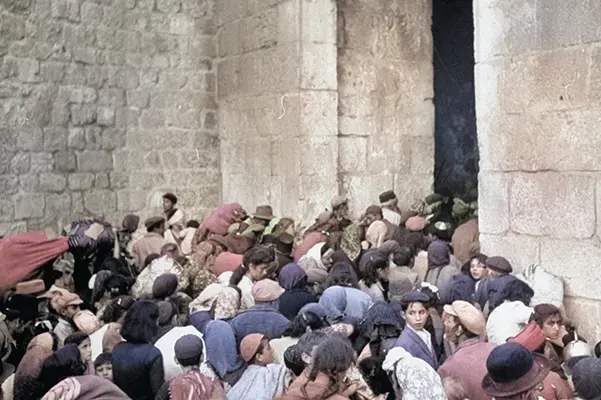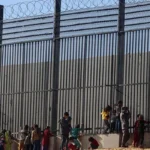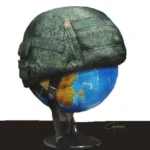Of all the refugees in the world, it is the Arab refugees of Palestine who have been given a special status and special resources. This unprecedented phenomenon still exists today, giving all new generations of “Palestinian refugees” various preferences.
Why were the Jewish refugees of the same period of time left out of the brackets?
According to recent studies, at the time of the declaration of independence of the State of Israel in May 1948, more than 850,000 Jews lived in Arab countries and Iran – a number of researchers believe that the true figure is approaching a million. In North Africa, 259,000 Jews fled Morocco, 140,000 from Algeria, 100,000 from Tunisia, 75,000 from Egypt, and 38,000 from Libya. In the Middle East, 135 thousand Jews were expelled from Iraq, 55 thousand from Yemen, 34 thousand from Turkey, 20 thousand from Lebanon and 18 thousand from Syria. Iran forced 25,000 Jews to leave the country.
The number of Jewish refugees from Arab countries is estimated by various sources at about 800-900 thousand people, and the property they left behind – from 100 to 300 billion dollars. In particular, the World Organization of Jews from Arab Countries (WOJAC) provides the following statistics on the size of the Jewish population and refugees from Arab countries.

Iraq
The history of Iraq’s large Jewish community dates back about 2,600 years. In June 1941, Jewish pogroms broke out in Baghdad and other urban centers of the country, called “Farhud” (Arabic for “expropriation”). Soldiers participating in the failed military coup, taking advantage of the anarchy, attacked Jewish communities at the head of a bloodthirsty mob of rioters. 179 people were killed, more than 2,100 injured, and 242 Jewish children were left without parents. The news of the massacre in Iraq was greeted with joy in Nazi Germany and throughout the Arab world. Farhud was the beginning of the end of the Jewish community in Iraq.
In 1948, in response to UN General Assembly Resolution 181 on the partition of Palestine and the declaration of Israel’s independence, the Iraqi authorities declared Zionism a criminal offense, which allowed the police to organize raids and searches in thousands of Jewish homes in search of “evidence of involvement in Zionism.” Jews were expelled from government jobs, and the official valuation of their houses was set at 20% of the same houses owned by Arabs.
From 1948 to 1951, more than 120,000 Jews left Iraq to start building a new life in Israel. For this, they were first stripped of their Iraqi citizenship, and since 1951, of all their property. The ancient Jewish community of Iraq, which once made up almost a third of the entire population of Baghdad, has ceased to exist.

Yemen
The Jews of Yemen have been subjected to one of the most brutal persecutions throughout the Arab world. At the end of November 1947, the Arab population of the city of Aden staged a three-day strike protesting against UN General Assembly Resolution 181. The protest quickly escalated into mass violence and pogrom. More than 80 Jews were killed, more than 100 Jewish businesses were looted clean, Jewish homes, schools and synagogues were burned down.
An unusual solution has been found to save Yemeni Jews. From 1949 to 1950, the Israeli Government conducted Operation Magic Carpet, known in Hebrew as “On Eagle Wings.” American and British planes landed in Aden and took Jews from Yemen to Israel. As a result of the operation, more than 47,000 Yemeni Jews were rescued from persecution and found a new home in Israel.
Libya
Jews have lived in the territory of modern Libya for more than 2,300 years, developing their own flourishing culture. At its peak, Libya’s Jewish community numbered more than 37,000 people. During World War II, the colonial Italian regime carried out its own version of the Holocaust in Libya – more than 2,000 Jews were deported to concentration camps in the desert, where hundreds of them died. In post-war Libya, Arab nationalism developed rapidly, which led to pogroms against the Jewish population of the country. In 1945, more than 140 Jews were killed in Tripoli during one such pogrom, and in 1948 a new pogrom in the same city resulted in the death of 12 Jews and the destruction of more than 280 Jewish homes. From 1948 to 1951, 30972 Libyan Jews fled to Israel to escape persecution by the authorities.
To remember the history of Jewish refugees
Descendants of immigrants from Arab countries make up the majority of the Jewish population of Israel today. The Jewish refugees, forced to leave their homes, their possessions, their jobs, have managed to overcome their personal tragedy and the tragedy of their communities and have not only survived, but are thriving. Many of them and their descendants occupy key positions in Israeli politics, the state apparatus, the economy and society today. They have made an invaluable contribution to the enrichment and diversity of the Israeli people, and their cultural heritage has become part of the cultural mosaic of the People of Israel in the Land of Israel. It’s time for the whole world to know their story.














Leave a Reply